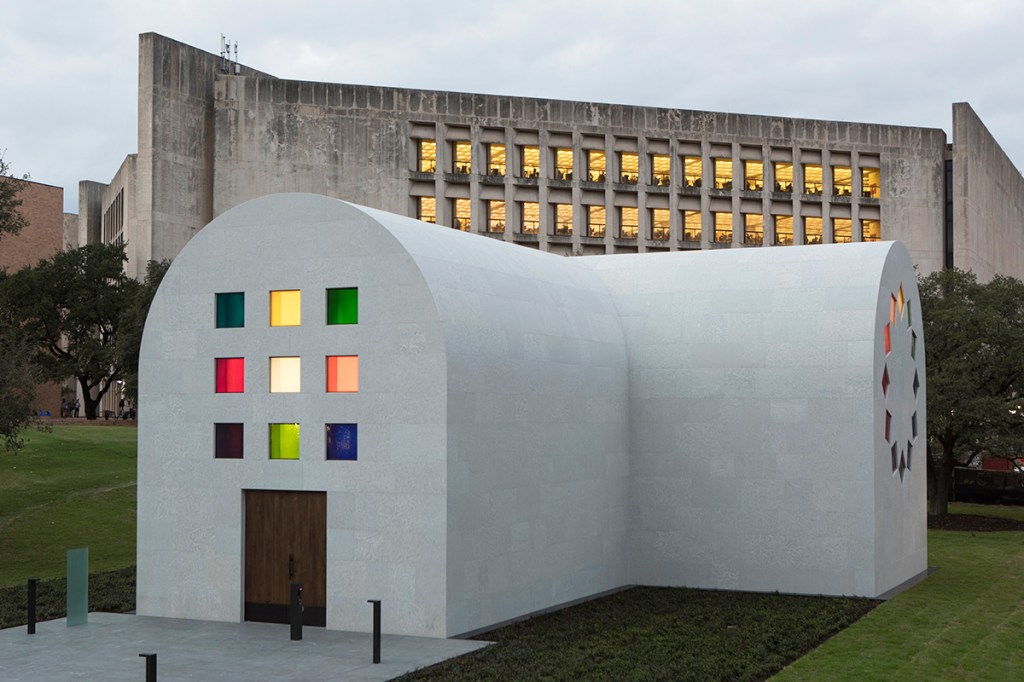Late American painter Ellsworth Kelly‘s final work—”Austin,” a 2,715-square-foot pavilion named after the state capital of Texas—unveils on Feb. 18 at the University of Texas at Austin‘s Blanton Museum of Art. This coincides with the opening of an exhibition centered around the artwork’s conceptual origins. The exhibition will also feature some of Kelly’s most important works, including “Sanary” (1951) and “Spectrum IV” (1967). “By situating Austin within the context of Kelly’s career, the exhibition provides an entry point for those who are new to his work, while expanding knowledge for Kelly scholars and fans,” according to a press release. Dubbed “Form into Spirit: Ellsworth Kelly’s Austin,” the new exhibition runs through April 29.
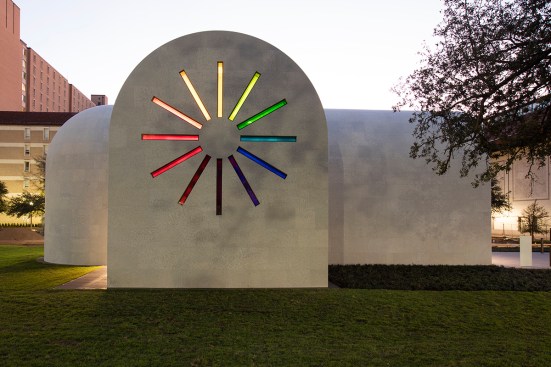
Ellsworth Kelly Foundation/Courtesy Blanton Museum of Art, The University of Texas at Austin
Ellsworth Kelly's Austin at the Blanton Museum of Art in Austin, Texas
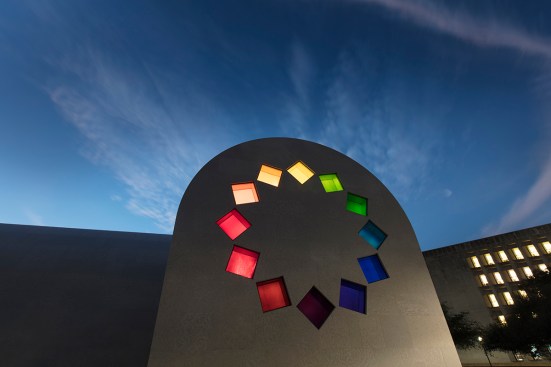
Ellsworth Kelly Foundation/Courtesy Blanton Museum of Art, The University of Texas at Austin
Ellsworth Kelly's Austin at the Blanton Museum of Art in Austin, Texas
Now part of the museum’s permanent collection, Austin is the only building the artist ever designed. The piece’s design reflects the artist’s appreciation for European art, architecture, and monuments. First designs for Austin dates back to 1986, nearly 30 years before Kelly gifted the building’s design to the Blanton Museum of Art in January 2015. In December 2017, two years after the artist’s death, the museum announced that it had raised $23 million for construction and fabrication of the piece, making Austin the only built structure designed by Kelly.
The piece was realized by San Antonio–based Overland Partners. Five years ago, the architecture firm began working closely with Kelly to realize his vision for Austin. “The design is entirely Ellsworth’s. Yet, Austin is not only a work of art; it is a building,” says Richard Archer, FAIA, Overland’s CEO. “Fulfilling an artist’s vision presents distinct challenges for the architect. The process is one of not only understanding the artist’s intent but intimately understanding how the artist thinks. Ultimately, it is about bringing what exists in the artist’s mind—the invisible realm—into the visible.”

Ellsworth Kelly Foundation/Courtesy Blanton Museum of Art, The University of Texas at Austin
Ellsworth Kelly's Austin at the Blanton Museum of Art in Austin, Texas
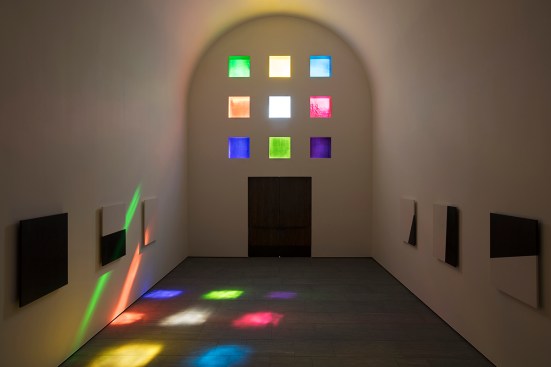
Ellsworth Kelly Foundation/Courtesy Blanton Museum of Art, The University of Texas at Austin
Ellsworth Kelly's Austin at the Blanton Museum of Art in Austin, Texas
Kelly’s interest in color, geometry, and form is reflected in Austin’s design. The temple-like stone structure features a cross-shape form with four arched wings and colorful stained windows on three façades. Inside, the windowless wing houses a wooden totem sculpture, and 14 black-and-white stone panels are exhibited throughout the space.
“Ellsworth Kelly’s Austin will be a bold new landmark for the university and our city,” said the museum’s director Simone Wicha in the same press release.
Curated by Carter Foster, the Blanton Museum of Art’s deputy director for curatorial affairs, “Form into Spirit: Ellsworth Kelly’s Austin,” opens Feb. 18 and runs through April. 29.
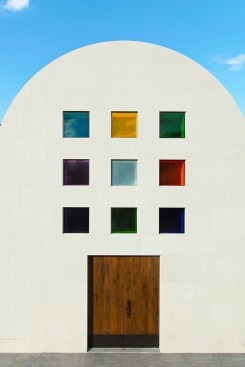
Ellsworth Kelly Foundation/Courtesy Blanton Museum of Art, The University of Texas at Austin
South façade
Correction: The exhibit will not feature “Colors for a Large Wall” (1951) but a graphite and collage on paper work from 1951 titled “Study for Colors for a Large Wall.” ARCHITECT regrets the error.
This story has been updated.
